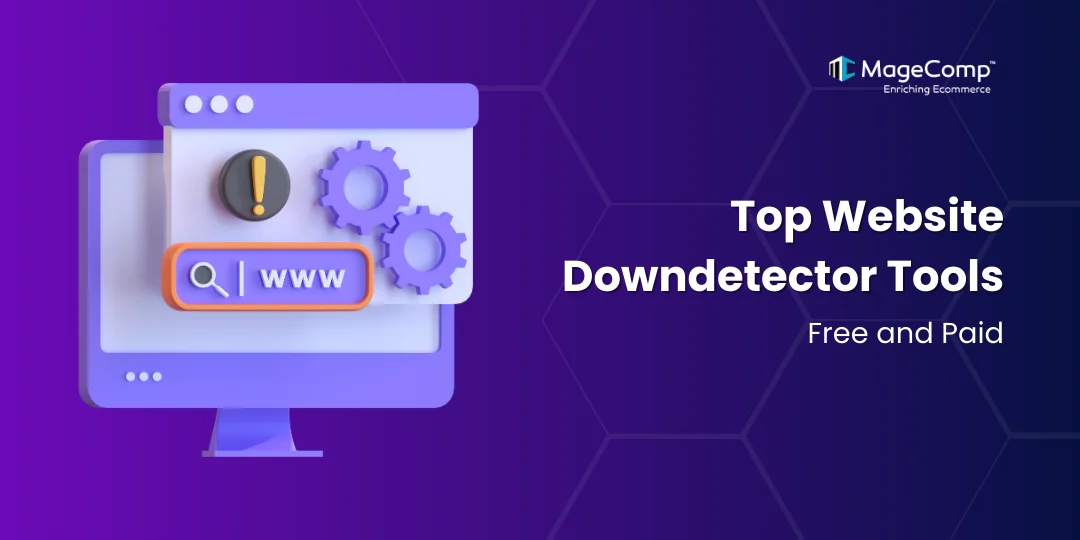Uptime of a website is of utmost importance to earn user trust, boost revenue, and improve business operations in such a fast-paced digital world. A sudden downtime of a website will frustrate the users, hamper business operations, and may also ruin a good brand reputation. Therefore, downdetector tools are extremely important for modern-day businesses. These tools help identify downtime, monitor performance, and provide actionable insights to address issues quickly.

In this blog, we’ll explore the top website downdetector tools for 2025, highlighting both free and paid options to suit various business needs. With deeper insights and more features, these tools are essential for maintaining a robust online presence.
Why Use a Website Downdetector Tool?
A website downdetector tool helps you to:
- Monitor Performance: Continuous uptime and page speed monitoring.
- Get Alerts: Instant difficulties while downtimes occur.
- Trend Analysis: Identify patterns to avoid the reoccurrence of problems in the future.
- Increase User Trust: Problems are settled fast and reliability is maintained.
- Optimize Operations: Gain insights to improve infrastructure and response times.
Top Free Website Downdetector Tools
1. UptimeRobot
UptimeRobot is probably one of the most popular free website monitoring tools, providing pretty robust uptime tracking. It scans your site every five minutes, and you would be notified once it is down via email or SMS or push notifications with reports. Immediately get notified as soon as your site goes down using Uptime Robot.
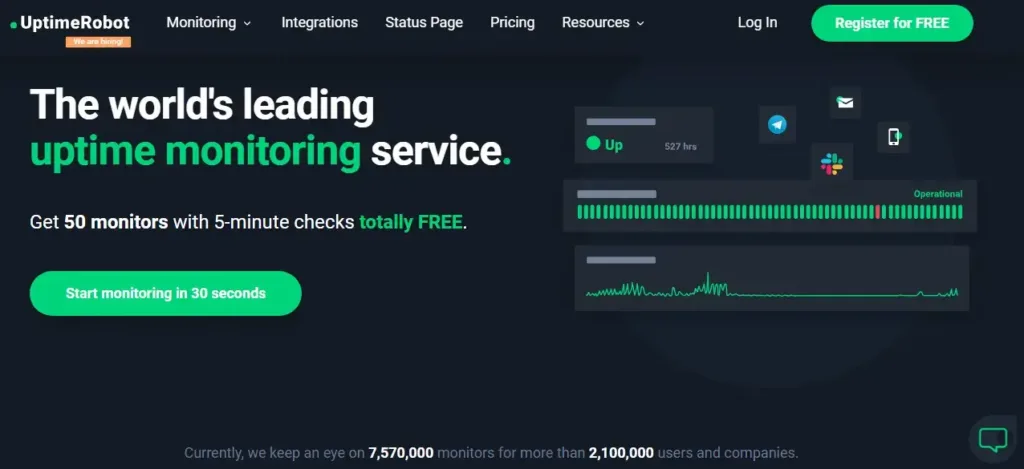
Key Features:
- Tracking up to 50 websites for free.
- Notifies through e-mail and push notifications.
- Easy dashboard to review downtime history.
- Checks HTTP(S), Ping, and Port checks.
- Monitors websites, APIs, and servers every 5 minutes.
Pros:
- Generous free plan.
- Intuitive interface.
Cons:
- Limited report and analysis features in the free version.
Best For: Small businesses and personal websites that need basic uptime monitoring.
2. Is It Down Right Now?
Is It Down Right Now? free tool lets users check whether a website is down for everyone or just for them. It is a good on-demand solution for quick checks. It gives a clear status message indicating whether the website is up or down. Just enter the URL and click the “CHECK” button, and the results page that displays will give you the current status, response time, and downtime information.
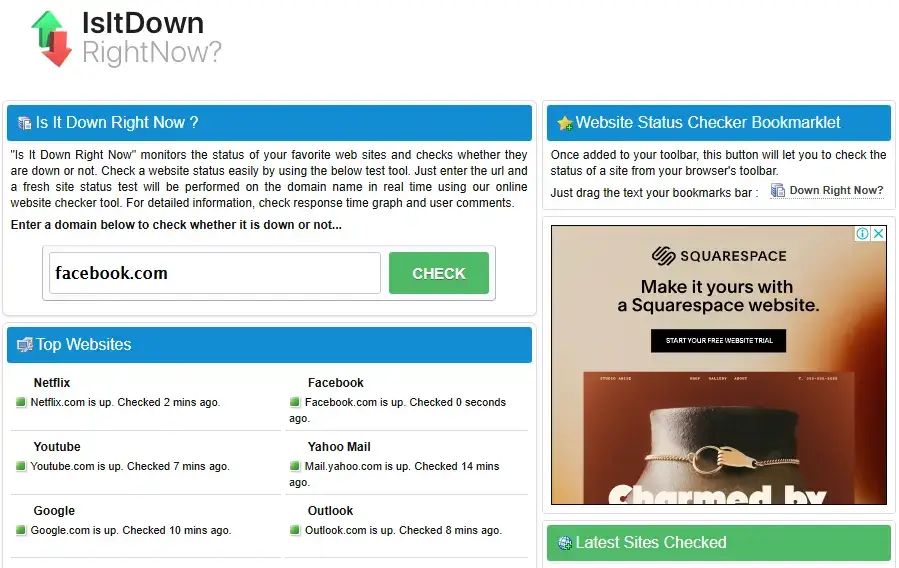
Key Features:
- Real-time server status checks.
- No setup required.
- Community feedback for specific issues.
Pros:
- Easy and fast.
- No registration required.
Cons:
- Lacks advanced monitoring features.
Best For: Casual users just wanting to quickly know if a site is down.
3. Down for Everyone or Just Me
Similar to Is It Down Right Now, Down for Everyone or Just Me tool is specialized for checking if a site is down everywhere, or just for the user locally. Simply type your website into the URL box and click the or just me? Button.
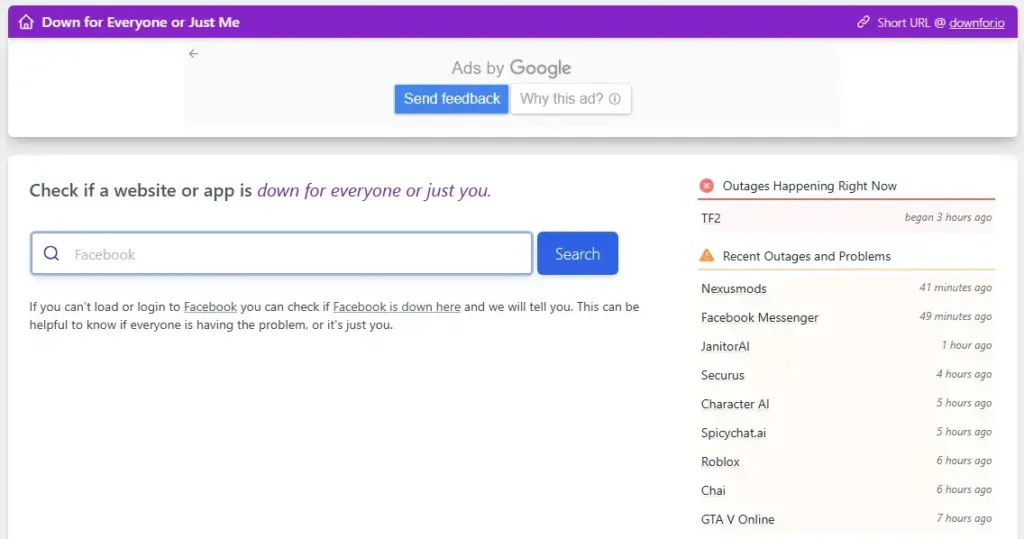
Key Features:
- Instant status checks.
- No account setup required.
Pros:
- Easy to use.
- Totally free.
Cons:
- Only manual checks are available.
Best For: Individuals and small teams performing ad-hoc checks.
4. Freshping by Freshworks
Freshping provides full monitoring capabilities even in its free plan, making it a great option for small teams. You can track the number of minutes your website has been down, the longest downtime duration, and the number of incidents you’ve experienced.
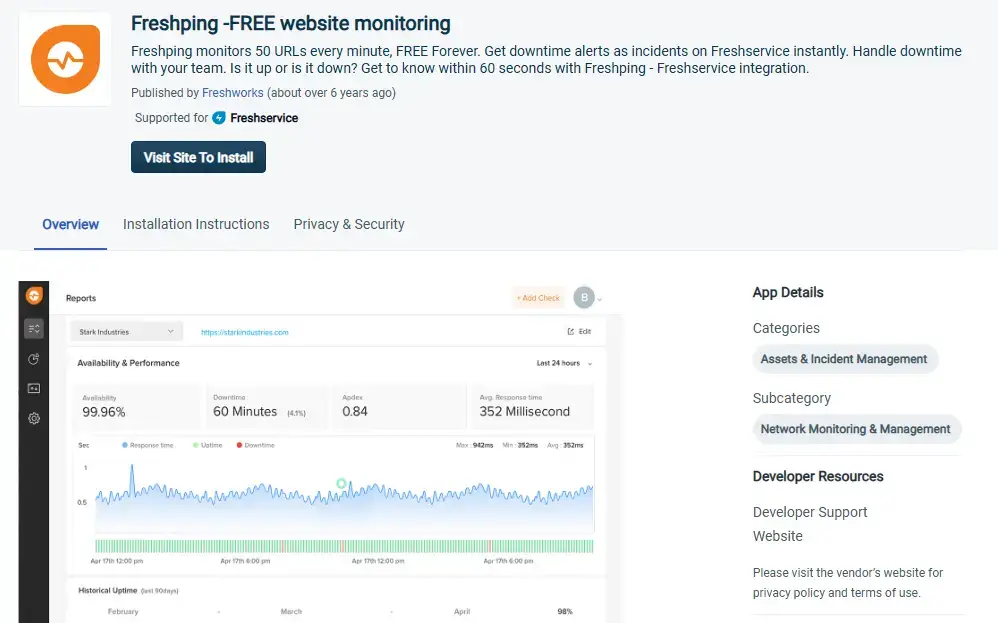
Key Features:
- 50 monitors with 1-minute check intervals.
- Public status pages.
- Unlimited alerts.
Pros:
- Advanced features for a free plan.
- Easy-to-use dashboard.
Cons:
- Scaling up requires paid plans.
Best For: Small teams requiring recurring uptime checks along with advanced features.
Top Paid Website Downdetector Tools
5. Pingdom
Pingdom is a well-known and reliable website performance monitoring tool that is equipped with very advanced features for any size of business. It checks website availability from multiple locations.
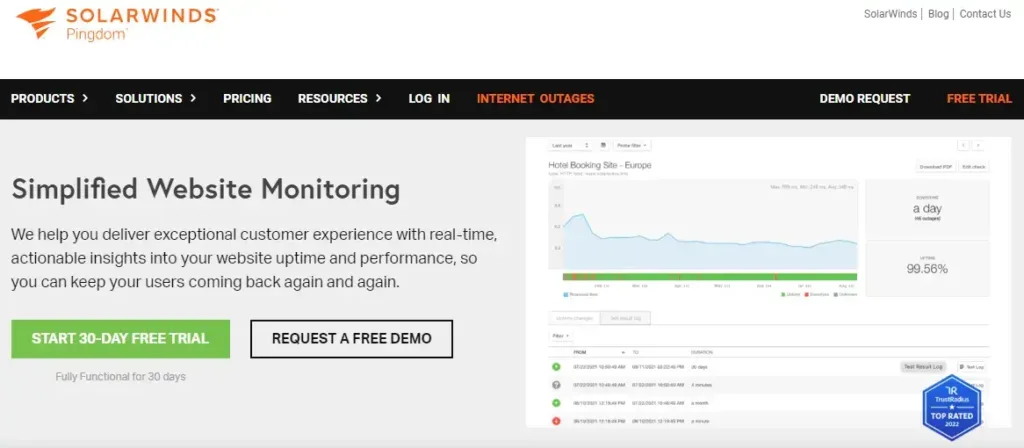
Key Features:
- Real-time monitoring at 1-minute intervals.
- Synthetic transaction monitoring.
- Advanced performance insights.
Pros:
- Comprehensive reporting.
- Reliable alerts and integrations.
Cons:
- High costs for advanced plans.
Pricing: Starts at $15/month.
Best For: Enterprises and eCommerce businesses.
6. Site24x7
Site24x7 makes an end-to-end monitoring solution with covering uptime of the websites, applications, and server health. This tool is beneficial for businesses with global audience as it identifies regional issues that affect website accessibility.
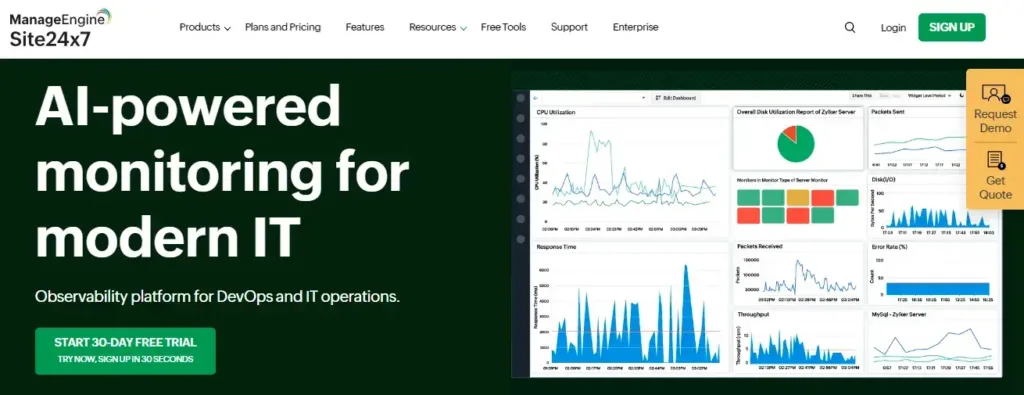
Key Features:
- Checks from 100+ global locations.
- Root cause analysis.
- AI-driven anomaly detection.
Pros:
- Comprehensive capabilities.
- Affordable entry-level pricing.
Cons:
- Steeper learning curve for new users.
Pricing: Starts at $9/month.
Best For: Businesses needing all-in-one monitoring.
7. Uptrends
Uptrends focuses on providing synthetic monitoring solutions to track uptime and performance. Check response time across 33 global locations and share the results with the team in just one click.
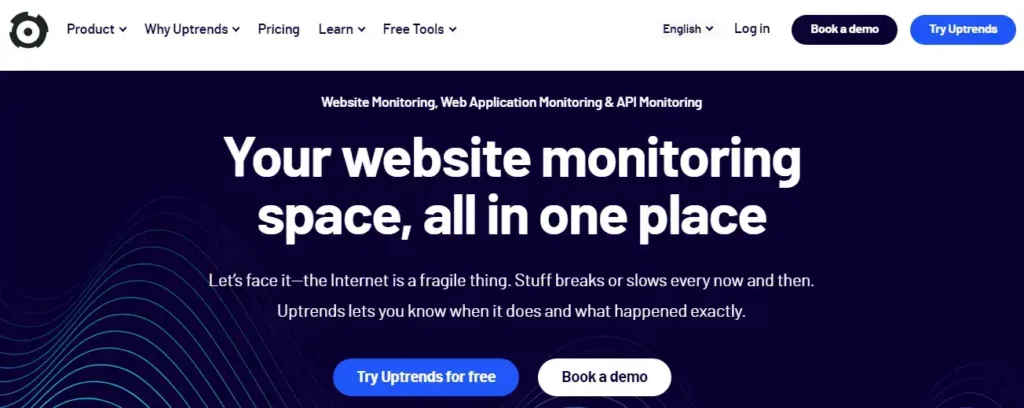
Key Features:
- Browser-based testing.
- Detailed SLA reports.
- Public status pages.
Pros:
- Customizable monitoring settings.
- Excellent reporting features.
Cons:
- Limited integrations.
Pricing: Starts at $14.82/month.
Best For: Mid-sized businesses.
8. Host Tracker
Host Tracker monitors website uptime, SSL certificates, and more to ensure site reliability. Monitor multiple websites from single dashboard using Host Tracker website downdetector tool.
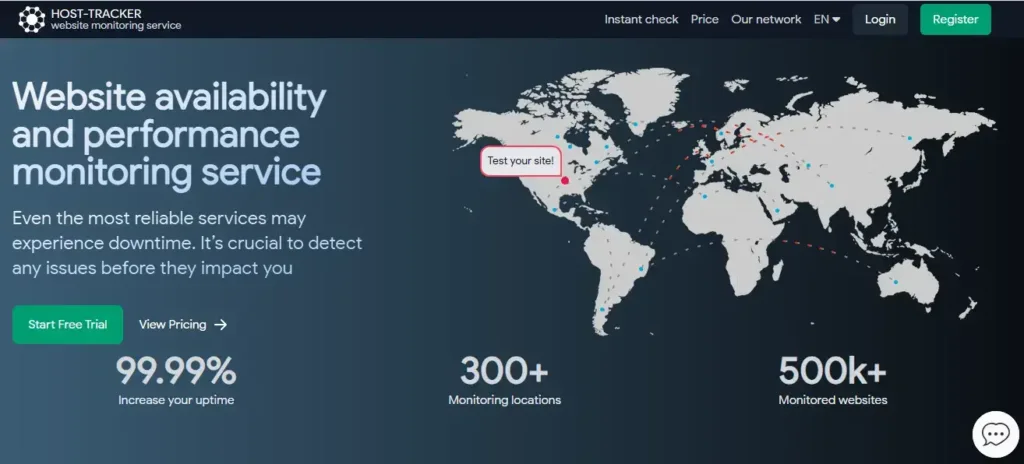
Key Features:
- 1-minute checks from multiple locations.
- SMS and email alerts.
- Integration of Google Sheets for reporting.
Pros:
- Flexible monitoring options.
- Affordable pricing plans.
Cons:
- Interface could be more intuitive.
Pricing: Starts at $5/month.
Best For: Small to medium-sized businesses.
9. GT Metrix
GT Metrix, known for page speed analysis, offers monitoring features that allow users to track uptime and site performance. It shows why the website is slow and ways for optimizing it.
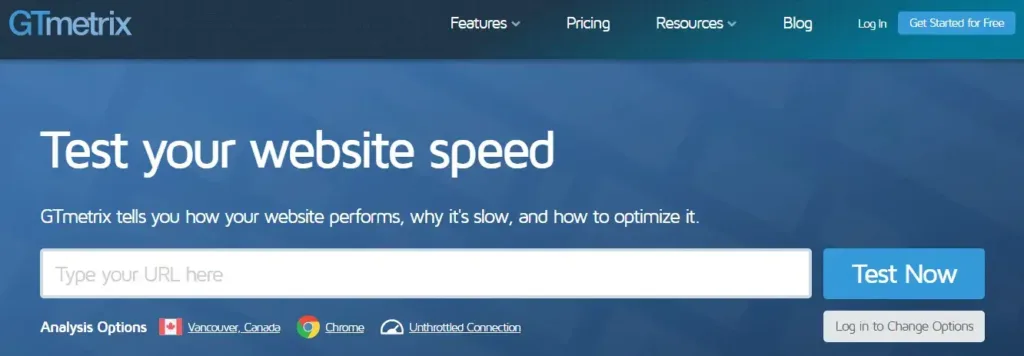
Key Features:
- Page performance insights.
- Scheduled monitoring.
- Video playback of performance issues.
Pros:
- Excellent for website speed optimization.
- Detailed waterfall charts.
Cons:
- Limited uptime monitoring capabilities.
Pricing: Starts at $10/month.
Best For: Developers looking to optimize website speed and uptime.
10. StatusCake
StatusCake provides a wide range of monitoring services, including monitoring of websites, domains, and servers. It runs a status check every 900 seconds to track uptime at regular time interval and identify if there are any issues.
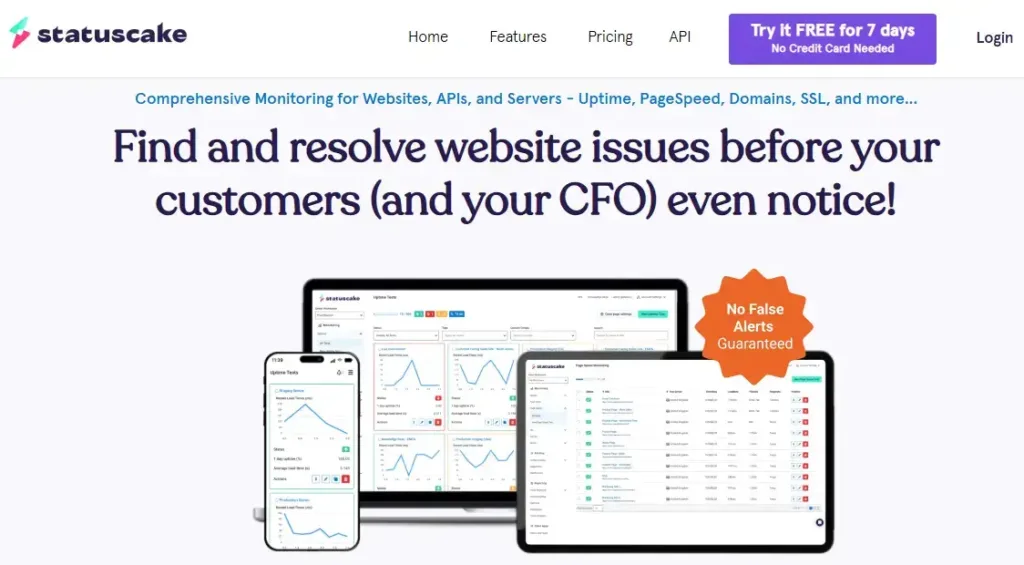
Key Features:
- Unlimited testing in paid plans.
- Global monitoring locations available.
- Custom alerting options.
Pros:
- Low-priced monitoring plan.
- So easy to customize to your needs.
Cons:
- Basic analytics in lower-tier plans.
Pricing: Starts at $20/month.
Best For: Small businesses looking for budget-friendly monitoring.
11. Down Detector
Down Detector is a UK-based community-driven monitoring tool that outlines outages for popular websites and their services. From its comprehensive list of popular sites you can find out whether it is down. You’ll find sites like AT&T, YouTube, Spotify, Twitter, Netflix, Amazon, UPS, and more.
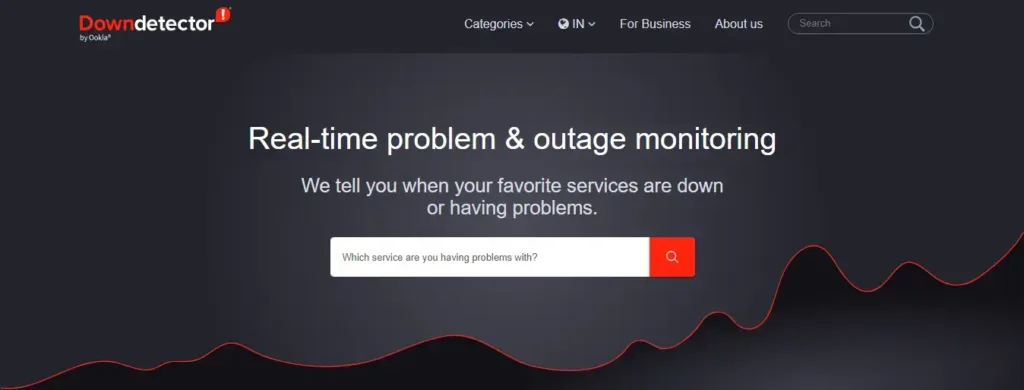
Key Features:
- Crowd-sourced issue reporting.
- Detailed outage maps.
Pros:
- Great for monitoring third-party services.
- Data is easily interpretable through graphics.
Cons:
- Limited to tracking public services.
Pricing: Free and premium options available.
Best For: Monitoring outages for external services.
How to Choose the Right Downdetector Tool
Here are some points to keep in mind while choosing a downdetector tool for a website:
- Budget: Decide whether the free plans would be okay or if paid features are really needed.
- Features: Determine if you need any monitoring frequency, alerting, and reporting that you need for your business.
- Scalability: Ensure it scales with the growth of your business.
- Ease of Use: Prefer tools which come with simple dashboards as well as a simple setup process.
- Integration: Ensure it fits with your stack.
Conclusion
Cost can be a burden associated with website downtime; however, it is possible to mitigate risks while ensuring a flawless user experience when using the proper downdetector tool. Free tools are available for new startups and smaller businesses, but premium options for larger enterprises could be Pingdom and Site24x7, which provide very comprehensive solutions. Evaluate your particular needs and budget to choose just the perfect tool for 2025.
Avail expert SEO Services to track performance and maintain the accessibility of your site.
Which of these tools are you using or planning to try? Let me know in the comments below!


